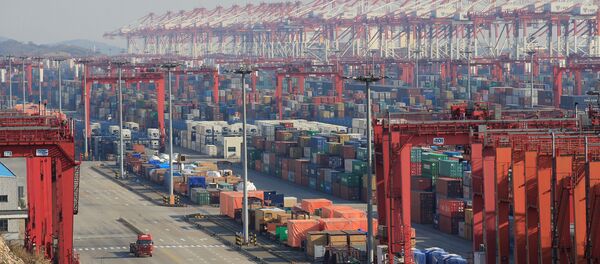In November alone the courts heard as many bankruptcy cases as they sometimes get in a year. What is the reason behind such a wave of bankruptcies this year?
READ MORE: Russia, China Can Ink Deal on National Currencies Payments by End of Year — Bank
Bankruptcy law has existed in the PRC for over 10 years. However, until 2014 there were no corporate defaults on bonds. Shanghai Chaori Solar, a small solar panel manufacturer, was the first one. Out of the 89.9 million yuan in debt ($ 14.6 million), it was able to pay investors only 4 million yuan ($580,000), after which it began a bankruptcy procedure. In 2015, Chinese companies were unable to pay 8.2 billion yuan ($1.2 billion) to their debt security holders. By 2016, the debt had already reached 30 billion ($4.3 billion). For a couple of years, the figure was at a stable level and then suddenly there was a fourfold increase.
To cope with the consequences of the 2008 crisis, the Chinese government decided to infuse 4 trillion yuan ($585 billion) into the economy, which at that time was 12.5% of the country's GDP. Most of these funds went to companies as loans through the banking system. As the state gave money, it also set the priorities for financing. Credits were given to companies for large-scale infrastructure projects. The selection criterion was simple: the more the project creates jobs, the better. During a crisis, this is really important. Profitability was the last thing on everyone's mind.
As a result, a huge amount of excess production capacity appeared in heavy industry and in solar energy. However, companies were not allowed to go bankrupt as they were also creating jobs. Local authorities urged banks to refinance loans. A huge sector of "shadow banking" has emerged — non-banking structures that give out loans at higher interest rates to those who have been denied loans by state banks. By 2017, shadow banking accounted for 10 trillion of the 34 trillion dollars of the total debt of public and private companies in China. In the end, banks sometimes securitised debts and sold them as investment products in order to unload their balance sheets.
"The US-China trade war affected the supply chain: duties on products of many enterprises increased, which is reflected in operating activities. The increasing Fed rates creates problems of liquidity shortages in world markets, so companies that borrowed money abroad are faced with an increase in interest rates on their debts", the expert said.
READ MORE: US China Trade War Impact: China Removes 7 Year Old Ban on Indian Livestock Feed
In his opinion, this has also become a big problem. Yet this is not only a Chinese phenomenon, but the entire world economy is also now in a state of uncertainty. Time requires companies to change their business models and move to a new level to avoid problems.
"On the one hand, a massive wave of defaults for creditors, of course, is bad. According to Bloomberg, an average of unsecured 'bad loans' can recover no more than 10-15% of the debt. On the other hand, it will improve the financial system. It will make loan products and decisions about providing them more market-oriented", Bian Yongzu noted.
"Zombie companies compromise the profitability of the credit industry. As a result, financial structures change their credit policy under these conditions. But then getting credit is becoming difficult even for promising, normal companies".
Therefore, in this case, a wave of bankruptcies, is a painful, but still necessary evolutionary process, the expert believes. Further movement towards the market implies an increase in the responsibility of economic entities for their capital. But the game is worth the risk. According to IMF's calculations, the elimination of zombie companies will bring China an additional 1.2 percent of GDP growth annually.
The views and opinions expressed by the speakers do not necessarily reflect those of Sputnik.





